Liposuction Surgery Types: What is the Safest Lipo Method?
Body Plastic Surgery
Having a firm and fit body is one of the many factors that can improve your self-image; however, local accumulation of fat tissue and saggy skin can challenge everybody in accepting their body. Fortunately, today, various body sculpting methods improve the shape and tone of the tissues by removing excess fat and skin.
Liposuction is a cosmetic surgery that has become increasingly popular to achieve a more sculpted and toned physique. The surgery removes unwanted fat from specific areas of the body, such as the stomach, hips, thighs, buttocks, arms, or neck, helping improve body shape. Liposuction can also sometimes be performed to reduce gynecomastia, or extra breast tissue, in men.
With advancements in technology and techniques, various types of liposuction methods, such as tumescent liposuction, are now available. However, when considering undergoing this cosmetic procedure, one crucial question arises: what is the safest liposuction method?
This essay aims to explore the different types of liposuction surgeries and analyze their safety profiles. By understanding each method's benefits and potential risks, individuals can make informed decisions about which approach best suits their needs and overall well-being.
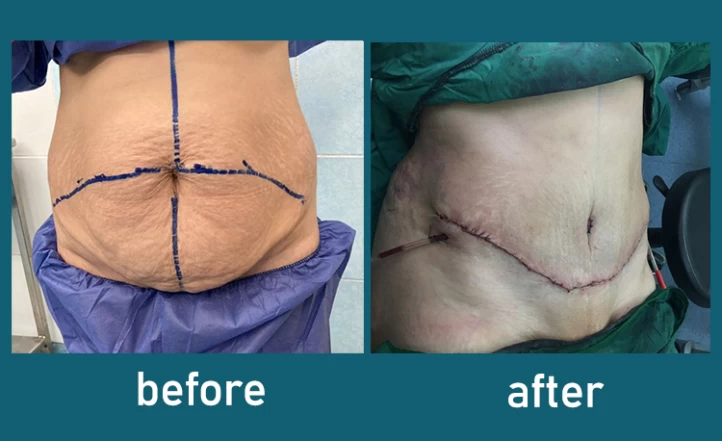
What Is Liposuction?
Liposuction, also known as lipoplasty, lipectomy, or simply lipo, is a surgical procedure through which extra fat cells are sucked out of the body by specific surgical devices. If you have unwanted fat in your abdomen, thighs, hips and sides, arms, back, inside the knee, chest, cheeks, chin, neck, legs, and ankles, you can undergo this surgery and enjoy its excellent results.
Although liposuction surgery is a fast way to reach a fit and beautiful body, it is not a weight-loss surgery and is only suitable for removing local fat deposits. Therefore, if you're overweight, you should first lose weight through diet, exercise, or other surgeries (such as gastric bypass surgery) and then contour your body with liposuction.
What Is the Safest Type of Liposuction?
All liposuction methods have some complications, and none of them is risk-free. The extent of each patient's side effects after liposuction surgery depends on his/her body's reaction to the operation. However, tumescent lipo and power-assisted liposuction have lower risks and higher satisfaction rates.
The main reason that these two types of liposuction surgery are the safest methods is that they involve fewer incisions and are mainly done under topical anaesthesia.
Different Types of Liposuction Surgery
In the following, different types of liposuction surgery are introduced:
- Tumescent Liposuction
- Ultrasound-assisted liposuction (UAL)
- Power-assisted Liposuction (PAL)
- Laser-assisted liposuction (LAP)
- VASER Liposuction
- Liquid Liposuction
Tumescent Liposuction
Tumescent liposuction is a plastic surgery where fat deposits are first liquefied by saline solution. Then, they are sucked out of the body by a cannula vacuum device. This surgery is done under local anaesthesia and has a short recovery period.
The most noticeable advantage of tumescent liposuction is that the surgeon uses lidocaine to numb the treatment site; therefore, you will not face unpleasant complications of general anaesthesia, such as nausea, headache, dizziness, muscle pain, bruising, etc.
On the other hand, tumescent liposuction is not a suitable method for those who expect significant changes.
Although tumescent liposuction is a safe procedure, it has some risks and side effects, such as:
- Mild pain in the parts where lidocaine is injected;
- Minimal bleeding;
- Skin irregularities;
- Pain in the incision sites;
- Mild discomfort during the recovery period.
It is also noteworthy that the recovery period of tumescent liposuction is 24 to 72 hours. Most people can return to work a day after tumescent liposuction, but if you have pain, you can take a day off and use pain medications to relieve your soreness.
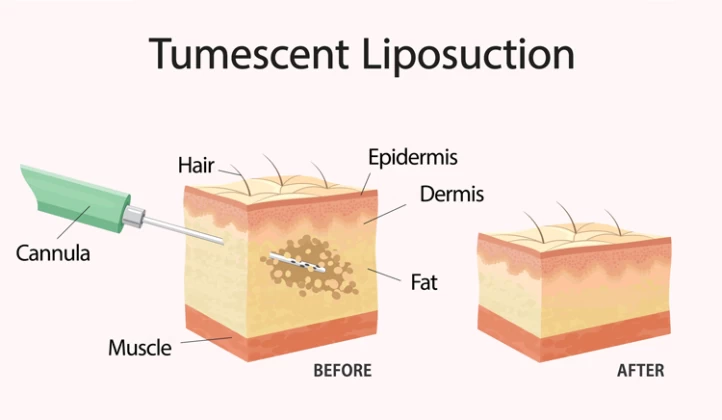
Ultrasound-assisted liposuction (UAL)
Ultrasound-assisted liposuction, or ultrasonic liposuction, is a lipoplasty that has recently attracted more attention. In this surgery, first, the surgeon numbs the target area and then inserts a rod into the body to deliver ultrasonic energy to fat deposits. Once the fat cells have been liquified, they are easily removed by a cannula.
Ultrasound-assisted liposuction, an outpatient procedure, can be used for different parts of the body, such as the belly, breasts, buttocks, arms, legs and back lipo. However, people with weak immune systems, diabetes, and blood problems should not undergo UAL.
The benefits of ultrasonic liposuction surgery include the following:
- It is done under local or topical anesthesia;
- It can be done at a doctor’s office, so you don’t have to get hospitalized;
- It is precise;
- It has a very short recovery period;
- It can be used for very stubborn fat cells;
- The whole procedure takes a short.
On the other hand, UAL has some possible risks and drawbacks, such as:
- Scarring;
- Formation of holes in the abdomen after the surgery;
- Infection;
- Skin loss;
- Nerve damage;
- Development of seroma in the operated area;
- Low blood pressure;
- Hemorrhage.
The recovery period of ultrasonic liposuction is between 3 to 5 days. After the procedure, you will probably have pain and swelling, so wear a compression garment and take painkillers to minimize these side effects.
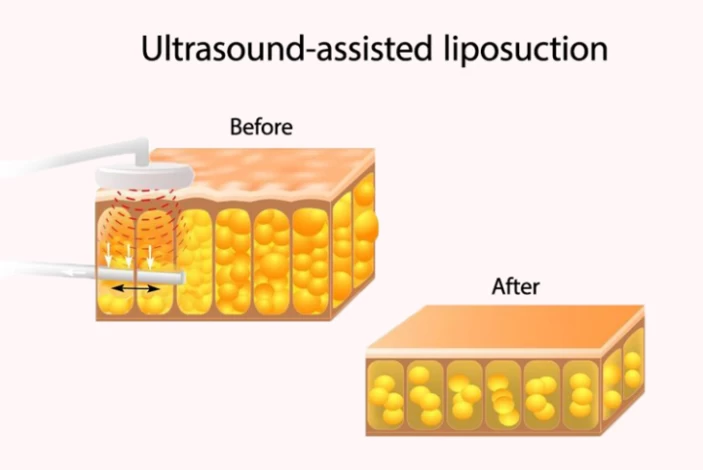
Power-assisted Liposuction (PAL)
Power-assisted liposuction is another lipectomy in which the fat deposits are first broken down and detached by vibration. Then, they are removed from the body using a cannula. PAL, the safest and least invasive form of liposuction, is mainly done under local anaesthesia and has a short recovery period. Also, the incisions during this surgery are minimal and often don't need sutures.
Since power-assisted liposuction is done under local anaesthesia, you will not face anaesthetics complications. However, this method has some possible risks and shortcomings, such as:
- Allergy to lidocaine or epinephrine;
- Loose skin;
- Mild pain in the incisions;
- Tenderness in the operated area;
- Mild bleeding;
- Discharges are coming out of the cuts.
Depending on the extent and location of surgery, you must take 3 to 7 days off work to recover completely. You may experience mild pain and bruise during recovery, which drugs can control.
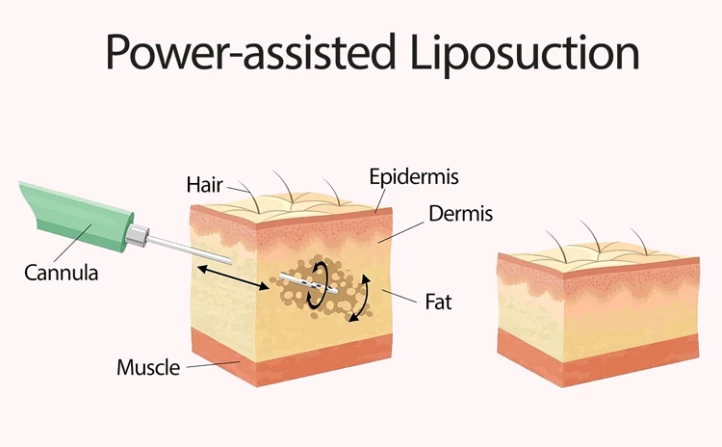
Laser-assisted liposuction (LAP)
Laser-assisted liposuction, or laser lipo, is a minimally invasive procedure with a short recovery period. This surgery takes an hour per area, is mainly under local anaesthesia, and suits all skin types.
During laser lipo, the surgeon makes small incisions (each 1 to 3mm long) and inserts a micro laser device into the body to liquefy the fat walls. Once the fats are melted down, they are extracted by a suctioning device.
It should be noted that laser-assisted liposuction surgery is not suitable for pregnant and breastfeeding moms, as well as the ones with:
- Heavy menstrual bleeding;
- Cancer;
- A history of atrophic scar and keloid formation;
- A history of chronic infection;
- Liver disease;
- Diabetes;
- Heart disease.
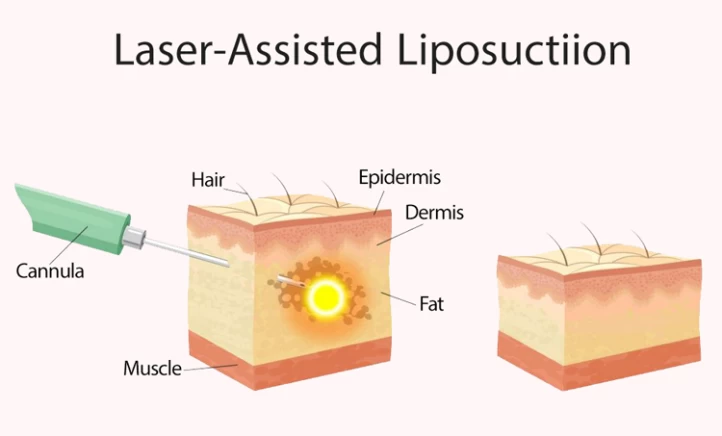
The recovery period of LAP involves minimal swelling, bruising, pain in the incision site, and mild bleeding and discharging. Still, you can return to work a few days after the operation. The advantage of this method is that your skin will be tighter and smoother after the operation because the laser beams stimulate collagen production.
Keep in mind that the results of LAP appear gradually, and it may take up to six months to see your surgery's final results.
VASER Liposuction (Vibration amplification of sound energy)
VASER is a kind of ultrasonic liposuction that uses several techniques to melt fats. This method is not a weight-loss surgery and is used to remove local fat deposits, mainly on the arms, chest, abdomen, and waist.
During the VASER surgery, done under general anaesthesia, the surgeon makes a few tiny incisions and injects a medicated solution to break down the fat walls. Then, the cannula and ultrasound waves are inserted into the body to melt and suck out the fat cells without damaging the nearby tissues. In some cases, the melted fats are removed using a syringe.
VASER lipo is very precise and can sculpt your body to a great extent.
However, it has some possible risks, such as:
- Bruising;
- Swelling for days;
- Bleeding;
- Infection and fever;
- Nausea due to the anaesthesia;
- Pain at the incision site;
- Minimal scarring;
- Skin irregularities such as hyperpigmentation;
- Loose or wrinkled skin.
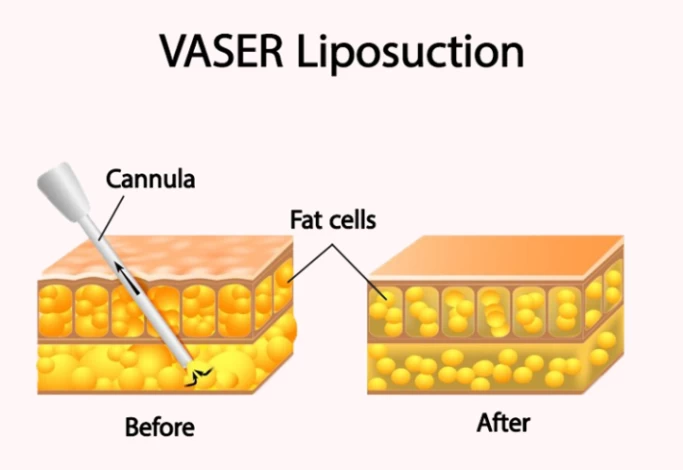
Since VASER is done under general anaesthesia, its recovery will last longer. Also, the final results of VASER liposuction appear 3 to 6 months after the operation. Following your surgeon’s postoperative instructions and wearing a compression garment for several weeks is essential to minimize the swelling and have a better result.
Liquid Liposuction
Another method to remove stubborn fat pockets from the chin, neck, jowl, thigh, and armpit is liquid liposuction, also known as soft lips and water-assisted liposuction. Liquid lipo is a less-invasive and safer alternative to tumescent liposuction, which has fewer complications and a shorter recovery period. In this operation, the surgeon numbs the intended body part and injects water and anaesthetics to destroy the fat walls.
Once the fat has been melted, it is sucked out of the body by a cannula. Since this operation is outpatient under local anaesthesia, you can return home several hours after the surgery. Full recovery from soft lips takes almost two months, but luckily, you will have minimal swelling, bruising, and pain.
Contact us for a free initial consultation about liposuction surgery.
WhatsAppTelegramFacebookEmailReasons to Undergo Liposuction
Although liposuction doesn't improve cellulite, stretch marks, or other skin irregularities, it can benefit you in other ways. Liposuction is performed mainly when diet or exercise can't remove extra fat masses. Some other reasons why people undergo liposuction include:
- It can treat gynecomastia;
- It can be done together with breast reduction surgery;
- It will boost your self-confidence;
- It can help you regain your pre-pregnancy body;
- It will improve your overall health;
- It enhances collagen production;
- It reduces fat production in the operated area.
What Areas Can Be Treated with Liposuction?
Liposuction surgery can be performed on any body part that has not responded to diet and exercise and has elastic skin. The most common areas for liposuction include:
- Lower and upper abdomen;
- Arms;
- Hips;
- Inner knees;
- Outer and inner thighs;
- Ankles and calves;
- Buttock;
- Waist and back;
- Male breasts;
- Chin;
- Neck.
Good Candidates for Lipoplasty
A good candidate for lipoplasty should have the following features:
- Having good overall health;
- Being mentally healthy;
- Not having blood disorders that may affect the surgery, such as restricted blood flow, haemophilia, etc.;
- Having a good immune system;
- Not having diabetes or hepatitis;
- Having elastic skin and good muscle tone;
- Being within 15% to 30% of their ideal body weight;
- Be a nonsmoker.

How to Prepare for Liposuction?
Before liposuction surgery, you will have a consultation meeting with your doctor. In this appointment, the doctor will check your skin type and decide which technique is better for you. You can also ask the doctor about the safety and effectiveness of the chosen technique, its procedure, its side effects, and its risks.
Moreover, before undergoing any liposuction surgery, consider the following tips:
- Find a skilled and experienced provider;
- Get as much information as you can from the internet, someone who has done this surgery before, your doctor, etc., to have a realistic expectation from the surgery;
- Get the necessary medical evaluations;
- Get a few days off from work;
- Provide a complete and detailed medical history;
- If you have an allergy or are taking certain medications, inform your doctor;
- Stop smoking and drinking alcohol from a month before the operation;
- Do not take herbal supplements and blood thinners from 10 days before the surgery;
- Maintain a stable weight.
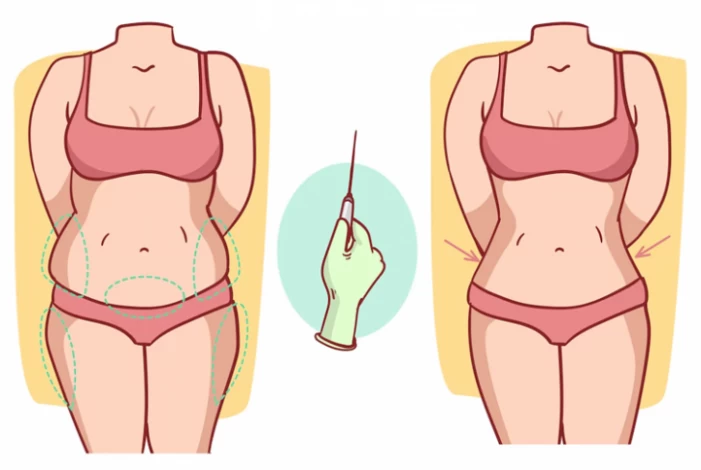
The night before liposuction
- Stop eating and drinking from 8 hours before the surgery;
- Do not apply lotions and moisturizers on the target parts;
- Take a shower because you may not be able to bathe for a couple of days;
- Ask someone to be your caregiver for the next 24 hours.
Liposuction Procedure
The procedure of liposuction depends on the technique used during your surgery. If you expect a great shift after the surgery, you must undergo an inpatient surgery and may need to stay a night at the hospital, but if you choose less invasive techniques, you won't be hospitalized and can get back home on the same day.
Also, the duration of the surgery depends on the number of target areas, how much fat should be removed, and what technique is used.
What to Expect After Liposuction?
As mentioned before, lipoplasty is not a weight-loss procedure; its results are permanent only if you change your lifestyle and maintain a healthy diet. After the surgery, you should expect mild pain in the treated areas, swelling, bleeding, bruising, contour irregularities, and fluid discharge. Of course, the discomforts will fade away within a week or two.
Still, you must follow the postoperative care provided by your doctor for a month and wear a compression garment to support the operated tissue. Notably, some patients experience scarring after liposuction surgery, which is normal. You can ask your surgeon to prescribe ointments, topical creams, or silicone gels to reduce the scarring.

Liposuction Recovery
The duration of the recovery period depends on your health condition, the amount of fat extracted, your skin type, the number of treated areas, and the surgical technique used. After six weeks, all the long-lasting discomforts caused by the surgery (such as bruising and infection) will disappear.
Still, you have to wait almost 6 months to see the actual outcome of the liposuction surgery. Moreover, the non-absorbable stitches will be removed a week after the surgery, and you can go for a gentle walk outside the house afterwards.
During the liposuction aftercare period, it is necessary to consider the following tips:
- Avoid heavy activities such as running, biking, and lifting objects heavier than 5kg;
- Have a balanced diet rich in protein, fibre, and vitamins;
- Wear a compression garment for as long as your doctor has suggested;
- Take the prescribed medicines, such as antibiotics and painkillers, on time;
- Do not sit or sleep for long hours;
- Stay hydrated;
- Avoid smoking;
- Avoid having alcohol and hard-to-digest foods;
- You can do contact sports or other strenuous activities after four to six weeks.
If you want to know about the post-liposuction surgery diet, read this article.
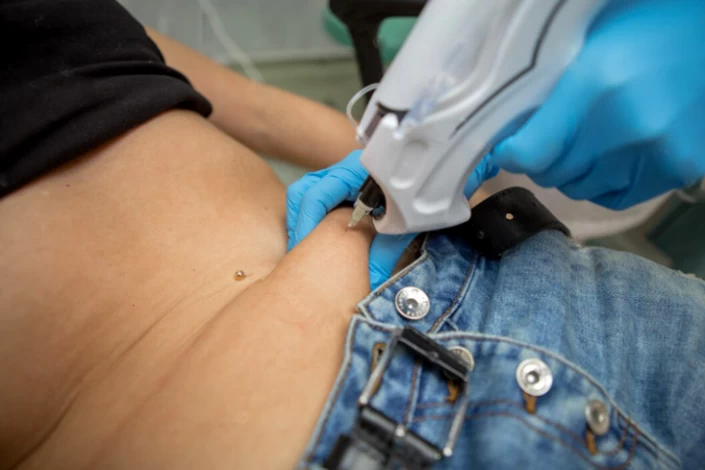
Side Effects of Liposuction Surgery
Liposuction is mostly known for its safety and high satisfaction rate; however, it is not risk-free and involves minor complications. The possible risks and side effects of liposuction surgery include the following:
- Infection which oral or injectable antibiotics can treat;
- Lumpy, bumpy skin due to uneven accumulation of fat or poor skin quality;
- Fluid accumulation (seroma) under the skin, which a surgical needle can drain;
- Skin discoloration;
- Internal tissue puncture by cannula. This may require emergency surgical repair;
- Hyper sensation or numbness in the skin for a period of time;
- Pain and discomfort in the incision site;
- Swelling and bleeding;
- Scarring, which creams and gels can minimize;
- Fat embolism is due to the accumulation of fat cells in the vessel. This complication is considered a medical emergency as the fat cells can travel to the brain and lungs via the veins;
- Fever due to skin infection;
- Anaesthesia side effects such as dizziness, headache, vomiting, etc.;
- Kidney, heart, and lung problems due to a shift in fluid levels in the body;
- Hematoma or bleeding under the skin;
- Damage to internal organs;
- Formation of a blood clot in an artery.
Is it possible for Liposuction to Fail?
Bad liposuction refers to a cosmetic procedure that has been poorly executed, resulting in unsatisfactory or even harmful outcomes for the patient. Some common issues associated with bad liposuction include uneven results, excessive scarring, skin irregularities, nerve damage, infections, fluid imbalances, and internal organ puncture (Rare cases).
Bad liposuction can occur for various reasons, such as inexperienced surgeons, inadequate pre-operative evaluations, improper techniques, or negligence during the procedure.
Gain Weight after Liposuction Surgery
In liposuction surgery, the fat cells are permanently removed from the body so they do not grow back simply. In fact, even if you gain a significant amount of weight, the fats will not accumulate in the treated area because there are little or no fat cells in the operated part to absorb the new fat cells. However, since the fat cells may deposit in other parts of the body, you need to maintain a balanced and low-carbohydrate diet and have an exercise routine to keep your BMI at the normal range.
Liposuction Vs. Tummy Tuck
Liposuction and tummy tuck are done to remove stubborn fat tissues and flatten the stomach. However, these two cosmetic procedures have some differences which are worth reviewing.
Liposuction is less invasive. Its recovery period is short and involves less pain. It has fewer complications. It is done under local anaesthesia.
Tummy tuck results are more dramatic. The muscles beneath the fat tissues can be tightened. Excess skin and stretch marks are removed, so the abdomen looks more youthful.
If you want to know more about liposuction and tummy tuck differences, don't miss the (Liposuction Vs. Tummy Tuck) article.
Conclusion
In sum, liposuction is an effective body plastic surgery that can greatly improve one's appearance. Finding a skilled surgeon is one of the most important factors in achieving good results after liposuction.
If you intend to get liposuction from the best plastic surgeons in Iran, contact Raadina Co. and get more information about the price of liposuction in Iran and the best hospitals and medical centres for this surgery.
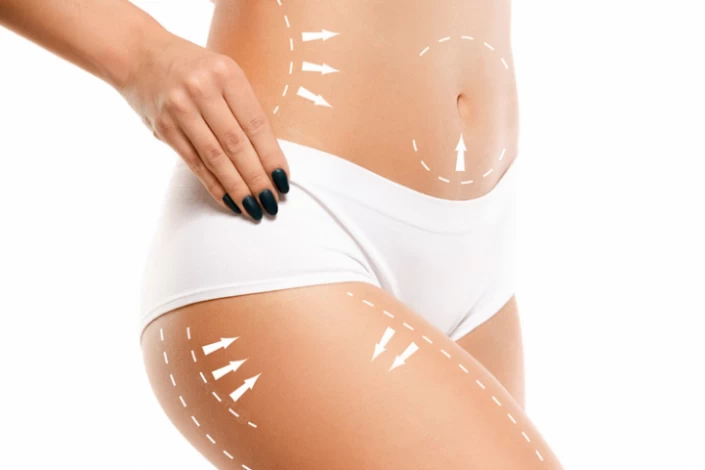
FAQs on Liposuction Surgery
1) What Are the Differences Between Liposuction and Liposculpture?
Liposculpture is a cosmetic surgical procedure that aims to remove stubborn fat deposits and contour the body. It involves using a small cannula to suction the fat cells from specific body areas, such as the abdomen, thighs, buttocks, arms, or chin.
While liposuction and liposculpture can remove excess fat from the body, liposculpture is a more refined technique that targets smaller areas and offers more precise and sculpted results. It is often used for fine-tuning body contours and creating a more toned appearance.
2) How much fat can be removed in liposuction?
The amount of fat that can be removed during this surgery depends on the fat volume, body part size, surgical technique and tools, and the patient's expectations.
3) Is the result of liposuction permanent?
Liposuction results are permanent as long as the patient maintains a stable weight.
4) Will my skin become saggy after liposuction?
After liposuction surgery, the skin adapts itself to the new contours. If you have thick and elastic skin, it will get as smooth as before, but if your skin is thin and rigid, it may get loose after the operation.
5) Is liposuction painful?
You won't feel pain during the liposuction procedure because your surgeon has administered anaesthesia. You may experience pain or tenderness after your procedure for a couple of days, which can be relieved by prescribed medications.
6) When can I return to my regular activities after surgery?
If you had an outpatient procedure, you could return to work within a few days, but you must take a few days off from work if you had an inpatient procedure. It can take six weeks to return to regular physical activities like exercising.
7) Is scarring possible after lipo?
Yes. Although the surgeons make the incisions on less visible body parts, you'll have some small scars after liposuction. You can use topical creams and ointments to reduce the scar marks.
8) Do I need a second lipoplasty?
Usually, the results of liposuction surgery are long-lasting, and it does not need to be repeated. There may be excess skin after the surgery, and additional surgery may be needed to remove them. Usually, however, the skin will tighten and conform to the new contour after the procedure.
9) Is Lipo 360 safe?
Lipo 360, also known as circumferential liposuction, is generally safe and effective when performed by a qualified and experienced plastic surgeon. However, like any surgical procedure, it does carry some risks and potential complications, such as infection, bleeding, fluid accumulation, and adverse reactions to anaesthesia.
10) What is the best type of liposuction for the stomach?
Tumescent liposuction, the most common type, can remove belly fat safely and effectively with relatively quick recovery.






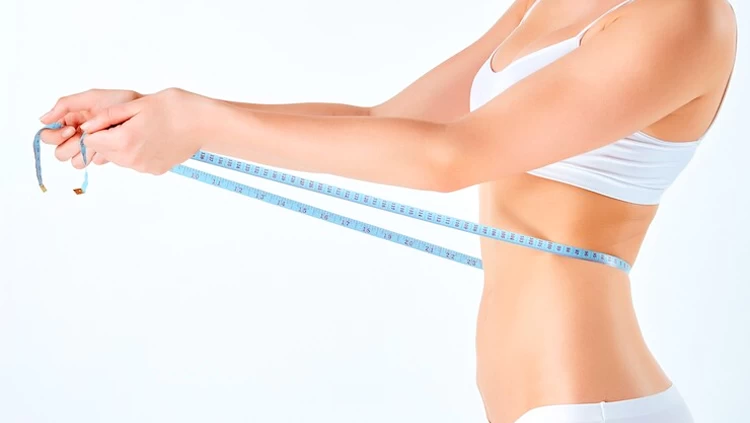

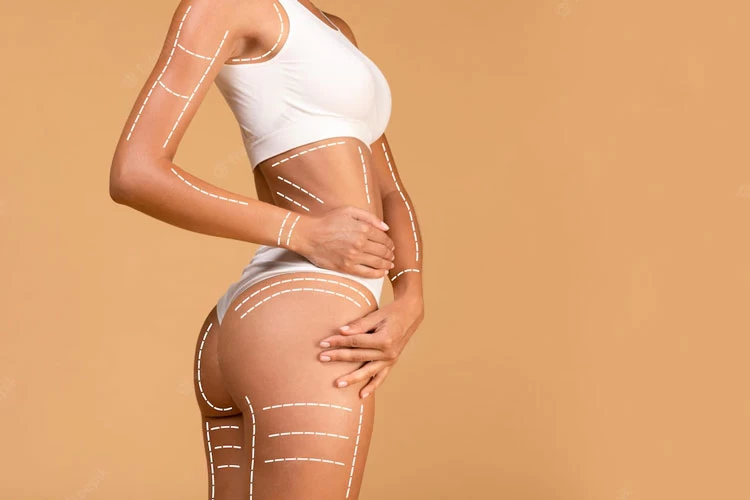
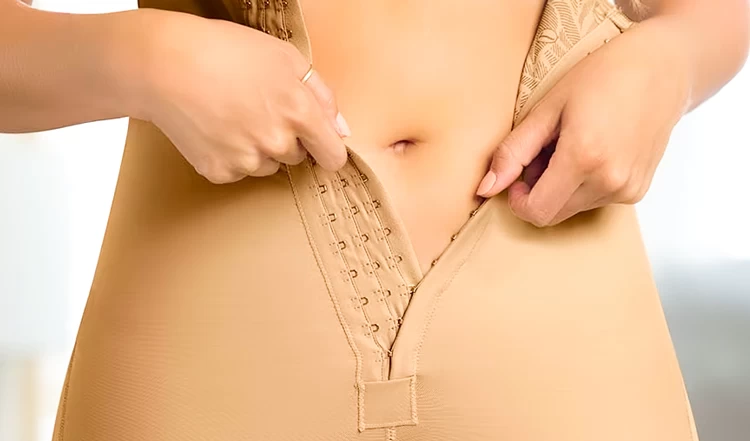



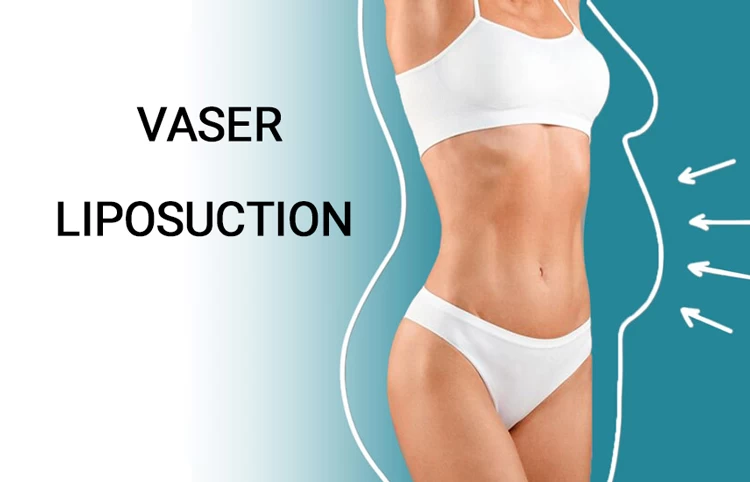

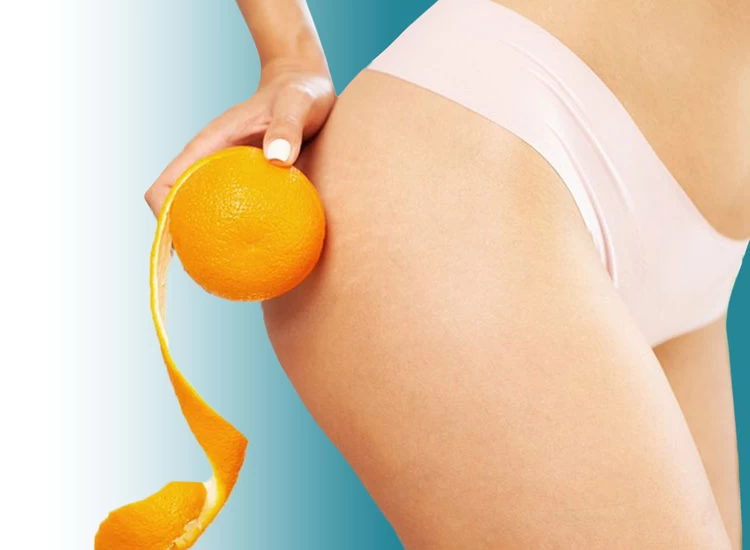
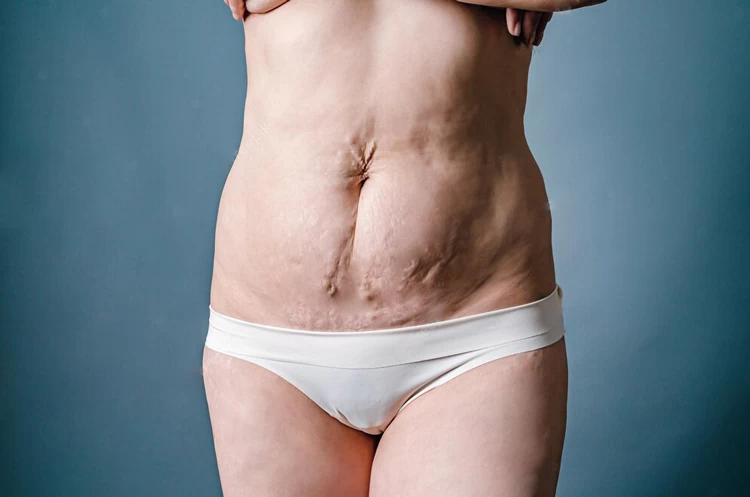


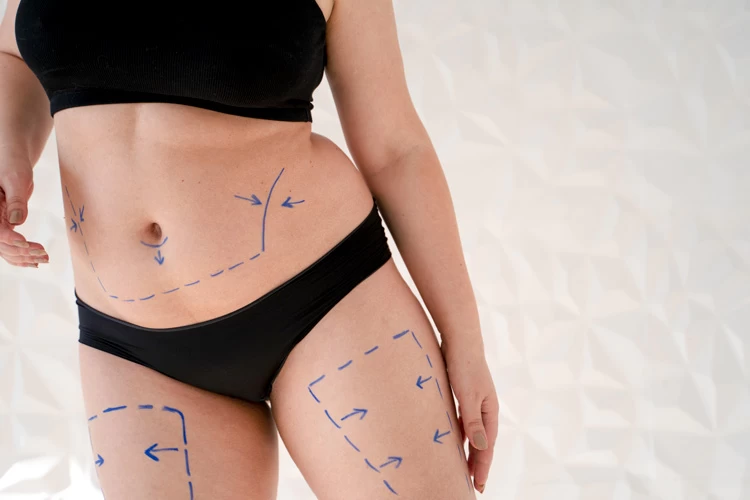
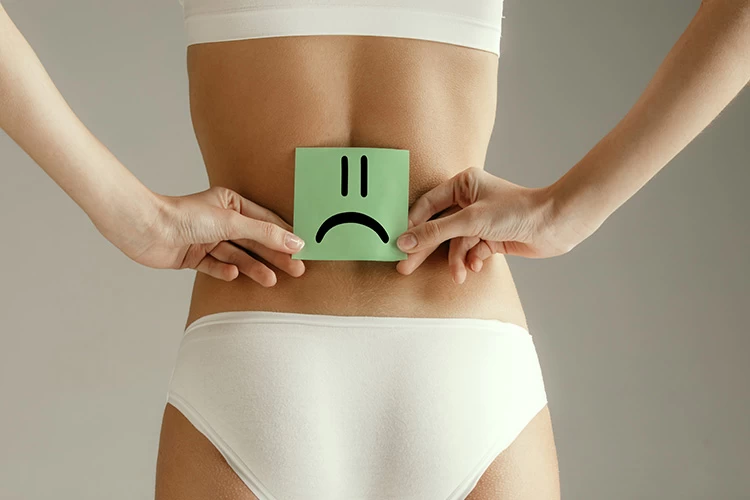

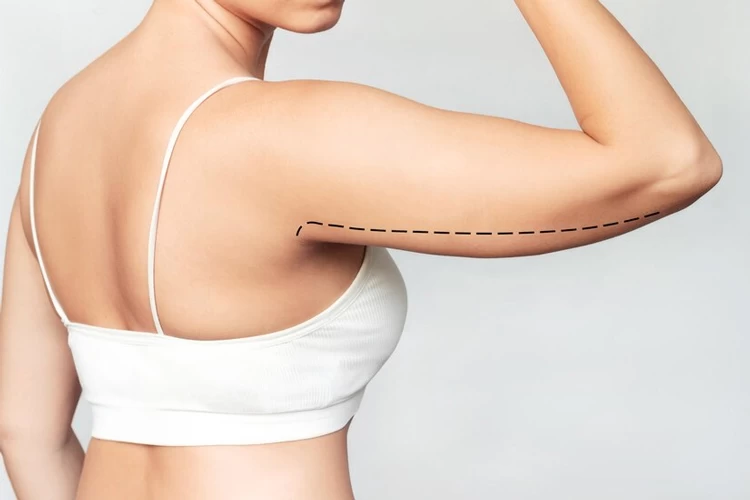
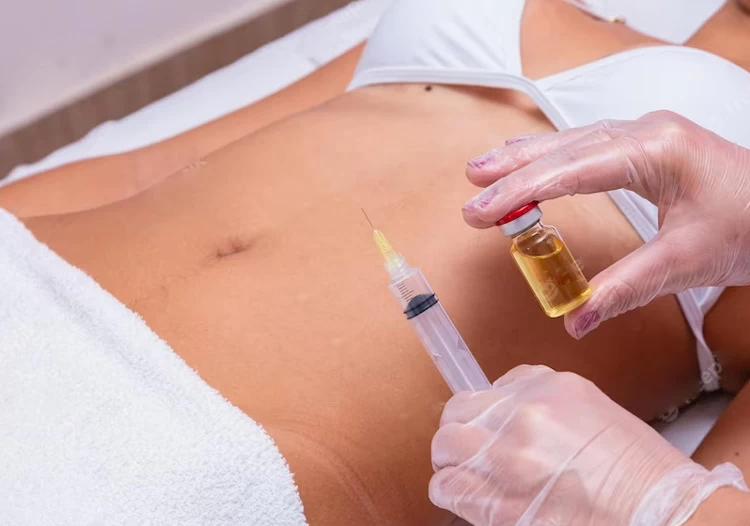
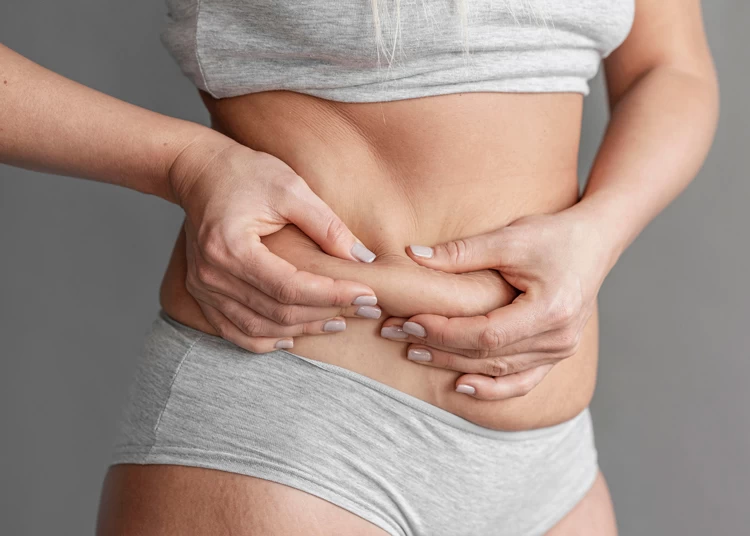
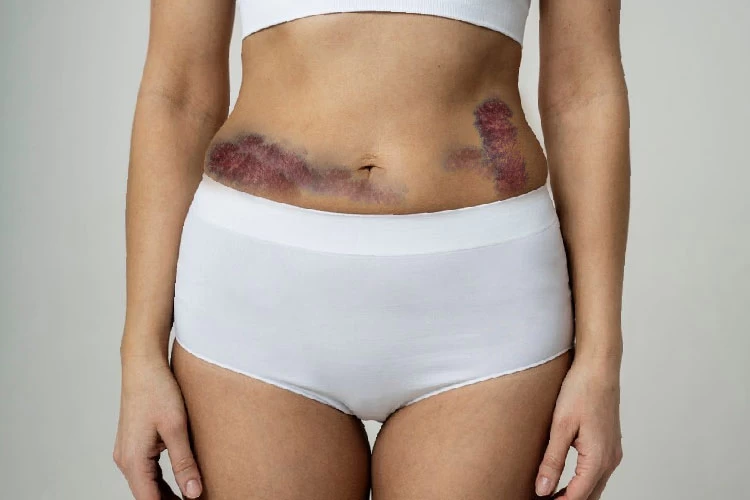
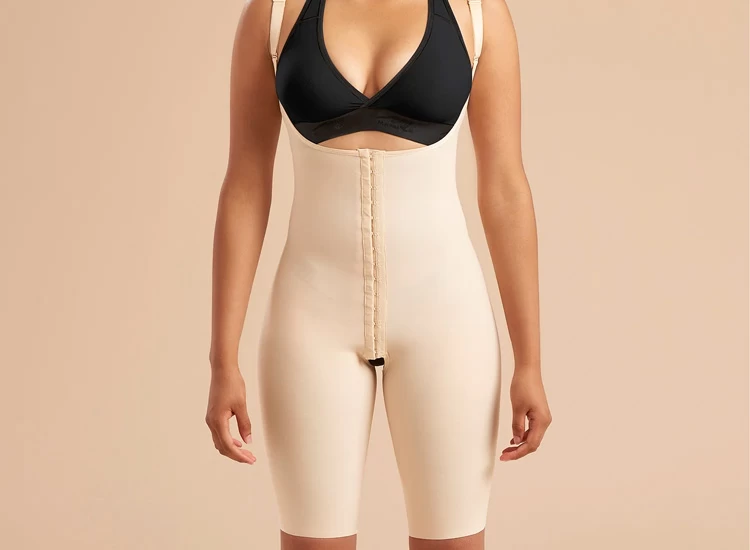

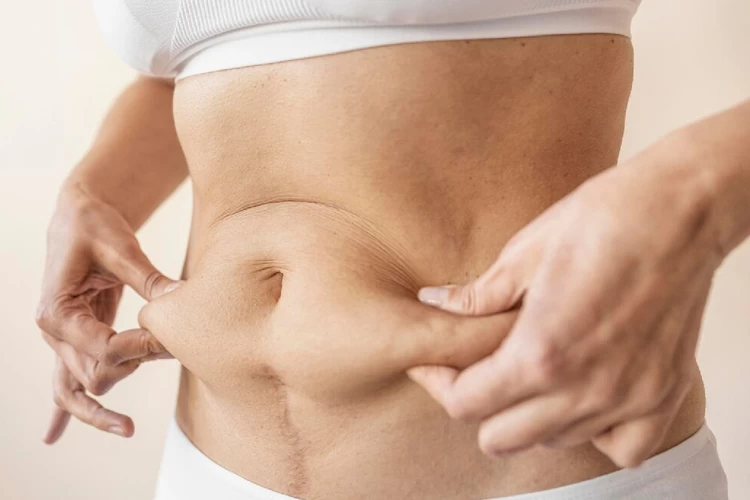
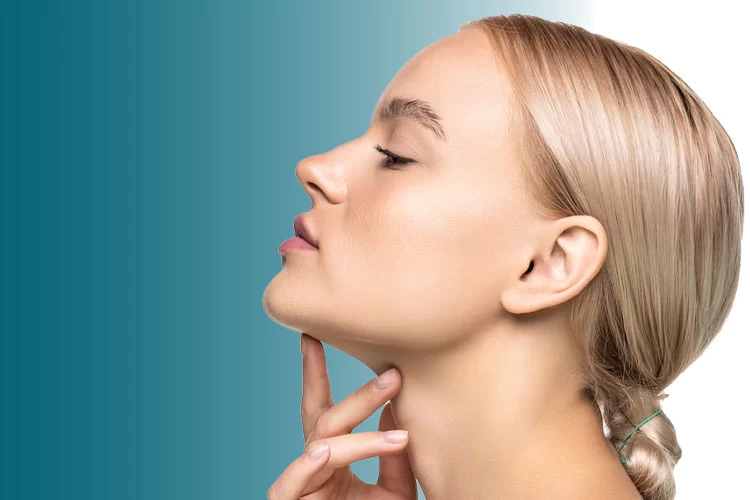
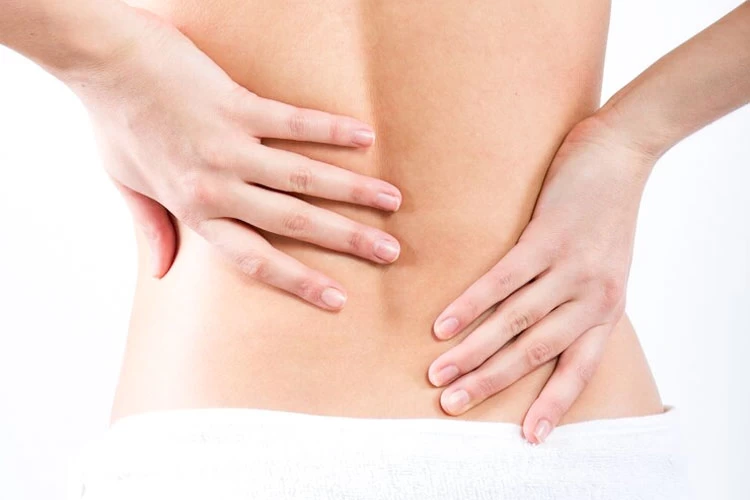
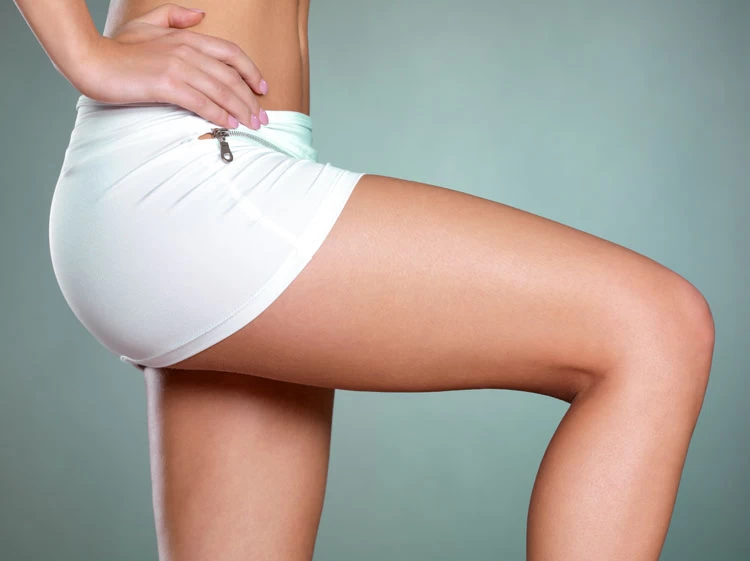
User
-How long does liposuction surgery take?
Habib Ebrahimi
-The duration of liposuction surgery depends on the number of targets and how much fat should be removed. On an average, the liposuction surgery takes one to three hours to complete.
User
-When will I see the results of liposuction?
Habib Ebrahimi
-Depending on how well your body responds to the liposuction surgery, you can see the final results of your operation in 6 to 12 weeks.
User
-Can I get multiple plastic surgery procedures at once?
Habib Ebrahimi
-Getting multiple plastic surgeries at once depends on your general health and the types of operations you want to get. Usually, it is possible to undergo liposuction surgery and breast augmentation/reduction/lift at the same time.
User
-Amazing Blog!
User
-Would you tell me how long I will be in the operating room during liposuction surgery? I mean how long will the surgery take.
Habib Ebrahimi
-Hello dear friend,
The duration of liposuction surgery varies depending on the amount of fat being removed, the number of areas being treated, and the technique used by the surgeon. On an average, the liposuction surgery may take 1-3 hours.
User
-Hi. I've decided to get rid of my fat pockets by liposuction. What should I do to get prepared before the surgery?
Habib Ebrahimi
-Hello dear friend,
Before liposuction surgery, consult with a qualified plastic surgeon who can provide you with specific instructions on how to prepare for the surgery. Make sure to follow them closely to ensure the best possible outcome.
Your surgeon may advise you to avoid certain medications, such as blood thinners, before the surgery. Make sure to inform your surgeon of any medications or supplements you are currently taking.
If you smoke, it is recommended that you quit at least two weeks before the surgery.
You will not be able to drive yourself home after the surgery, so make sure to arrange for transportation in advance.
Make sure to prepare your recovery area in advance with everything you will need, such as pillows, blankets, and entertainment.
User
-Hello. I'm going to undergo lipo surgery next week, but I’m a little frightened that it may be so hard and dangerous for me. Could you explain what happens during liposuction surgery?
Habib Ebrahimi
-Hello dear friend,
Generally, plastic surgeries contain some side effects, but it is crucial for surgery to be performed by a qualified and experienced plastic surgeon.
During the liposuction procedure, your surgeon will make small incisions in the targeted areas and insert a thin, hollow tube called a cannula. The cannula is used to suction out excess fat from the body.
If you want more information about experienced surgeons in Iran, contact us via Whats App.
User
-Hi. I'm 23 years old. I feel uncomfortable wearing tight clothes because of my belly fat and flanks. My breasts are very large, too. Can I get multiple plastic surgery procedures at the same time?
Habib Ebrahimi
-Hello dear friend,
Yes, but it depends on various factors, such as your overall health, the extent of each procedure, and the types of surgeries you want to get. Typically, you can undergo liposuction and breast augmentation (or breast reduction/breast lift) at once.
You can contact us for information.
User
-Hi. I have fatty lipomas on my thighs. Can liposuction be used as a medical procedure to remove them?
Habib Ebrahimi
-Hello dear friend,
Yes, liposuction can treat conditions like lipomas (benign fatty tumors), gynecomastia (enlarged male breasts), and lymphedema (swelling caused by a buildup of lymph fluid). In these cases, liposuction is considered a medical procedure. However, it is important to note that liposuction is primarily used as a cosmetic procedure to remove excess fat from specific body areas.
User
-Hello. I'm 22, height 160 cm and my weight is 90 kg. Can I use lipo to lose weight?
Habib Ebrahimi
-Hello dear friend,
No, liposuction is not a weight loss method and is not recommended for people who are significantly overweight or obese. This surgery is a cosmetic procedure that is used to remove excess fat from specific areas of the body. You can contact us to consult with a doctor to get a personalized weight loss plan that suits your needs and goals.
Whats App
User
-Hi. My upper arms are too big. I tried diet and exercise but I couldn't get rid of it. Is Arm Liposuction aftercare difficult? How is the recovery process?
Habib Ebrahimi
-Hello dear friend,
Aftercare for arm liposuction is generally not too difficult, but following your surgeon's instructions for optimal recovery is important. The recovery process for arm liposuction can vary from person to person, but most patients can resume normal activities within a few days to a week.
Immediately after the procedure, you may experience swelling, bruising, and discomfort in the treated area. Your surgeon may recommend wearing compression garments to help minimize swelling and support healing. You may also be advised to avoid strenuous activities and heavy lifting for a certain period.
If you want to know more about this surgery, you can read the Raadina Health arm liposuction article.
User
-Hello. I'm 15kg overweight. After lipo, how much weight may I lose?
Habib Ebrahimi
-Hello dear friend,
Liposuction is not a weight loss procedure and is not designed to help individuals lose a significant amount of weight. It is designed to remove localized pockets of fat resistant to diet and exercise. The amount of fat that can be removed during liposuction varies depending on your body composition, the treatment area, and the surgeon's technique. On average, liposuction can remove up to 4 kilograms of fat. However, it is important to note that the amount of fat removed does not necessarily translate to a significant change in weight.